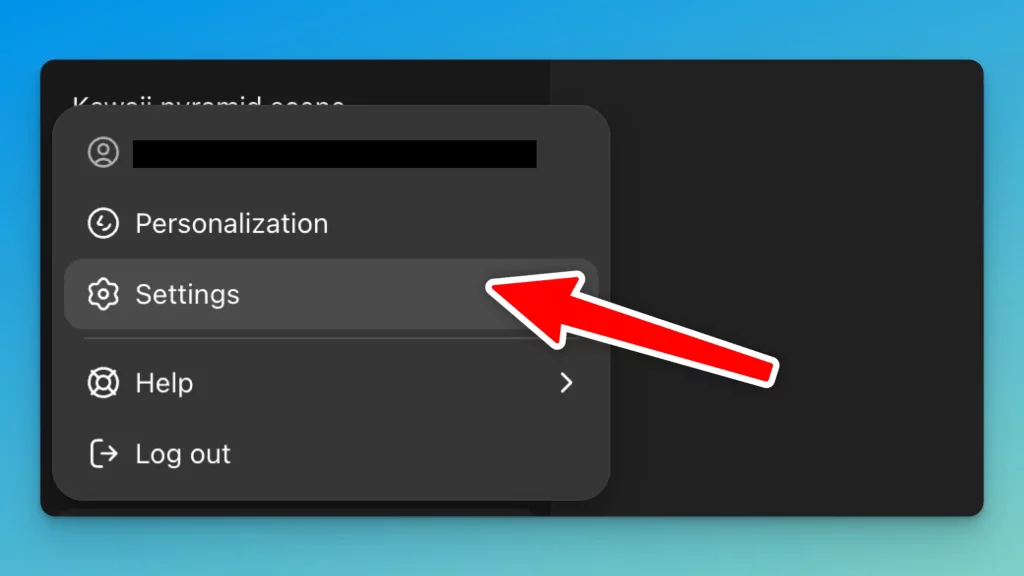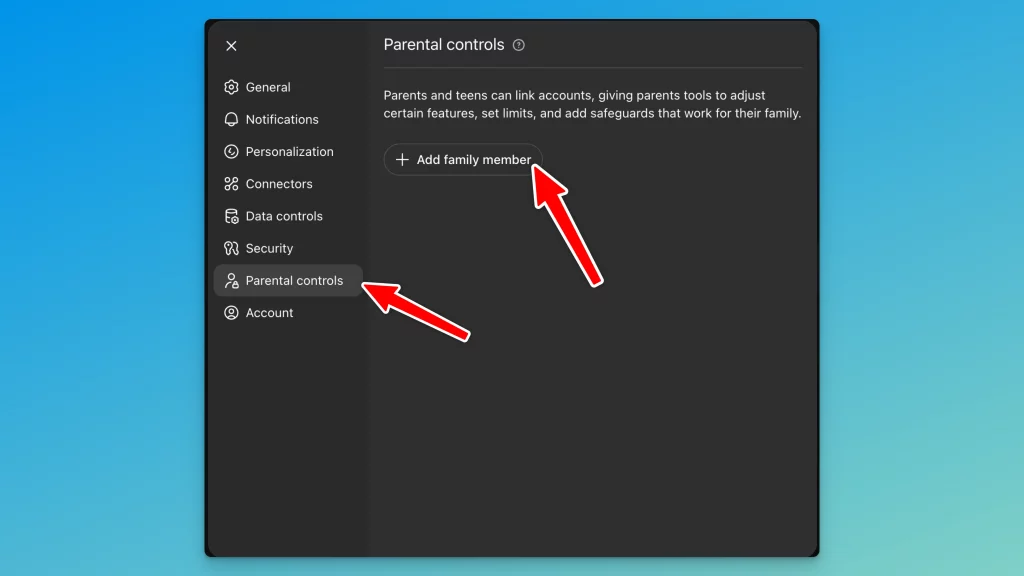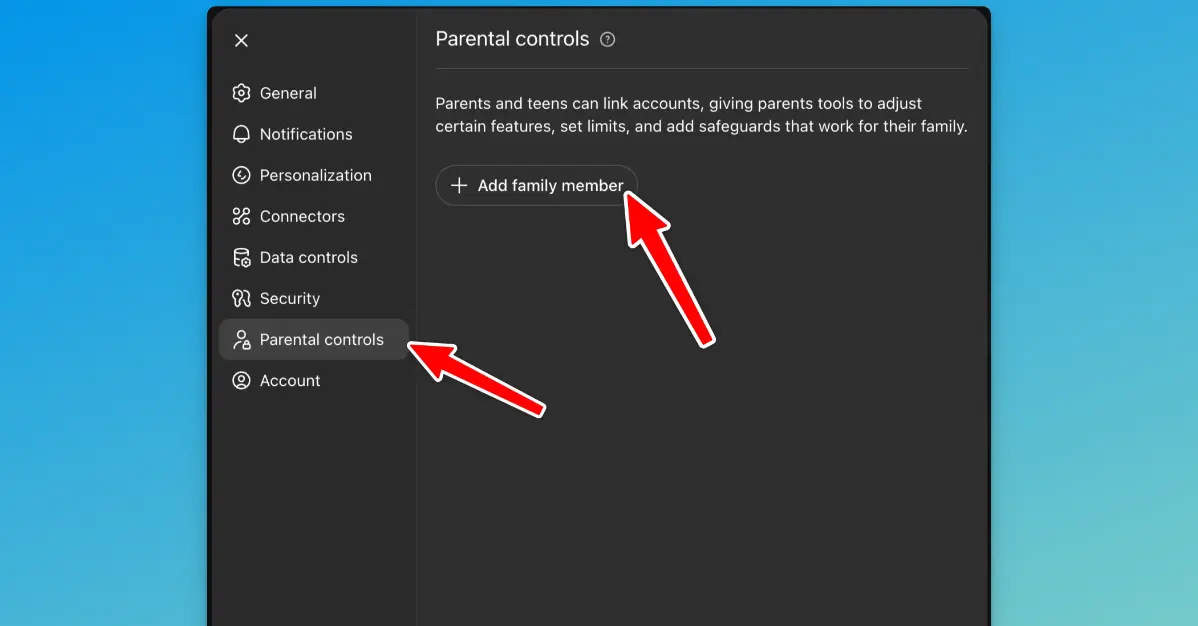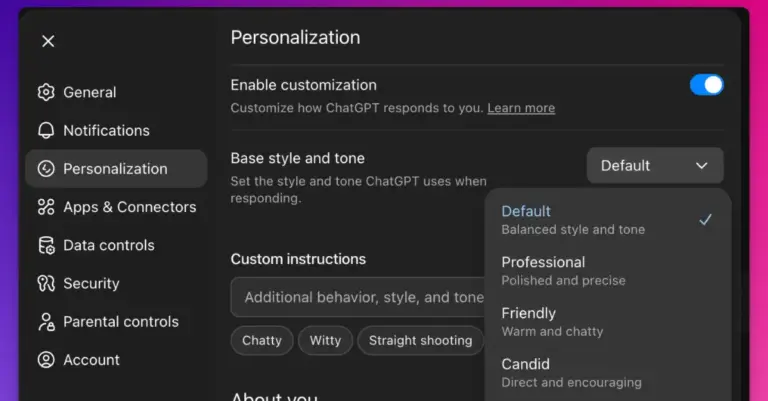How to Enable Parental Controls in ChatGPT
OpenAI recently launched parental control features for ChatGPT, aimed at keeping teens aged 13-18 safer while using the platform. I’ve gone through the setup process myself, and I’m walking you through exactly how to get these controls up and running.
If your teen is using ChatGPT, these controls give you some peace of mind. You can monitor usage, limit certain features, and even receive alerts if the system detects something concerning. It’s not foolproof, but it’s a step in the right direction.
Set Up Parental Controls
Go to chatgpt.com and here’s how to connect your account to your teen’s.
Access Your Settings
Click your profile icon in the bottom left corner. Select Settings from the dropdown menu.

Step 2: Find Parental Controls
In the settings menu, look for Parental controls and click it.
Step 3: Add Your Teen
You’ll see an option that says + Add family member. Click that.

Step 4: Send the Invite
Now you need to choose how to reach your teen:
Option A: By Phone
- Select your country code (like United States +1)
- Enter their phone number
- Hit Send
Option B: By Email
- Enter their email address
- Hit Send
Your teen will get a text or email with a link to connect their account. They’ll also see a notification inside ChatGPT itself.
Step 5: Wait for Acceptance
Once your teen clicks the link and accepts, their name will show up under Family members in your settings. From there, you’re in control.
What You Can Actually Control
After your teen accepts the connection, click their name under Family members. You’ll see several settings you can adjust:
Content Protections
The Reduce sensitive content setting turns on automatically when you connect accounts. This filters out:
- Graphic content
- Viral challenges
- Sexual or romantic roleplay
- Violent roleplay
- Extreme beauty ideals
Your teen’s account gets age-appropriate protections without you having to do anything extra.
Memory Settings
You can control whether ChatGPT remembers details about your teen’s conversations. If you turn Reference saved memories on, ChatGPT can recall things like class projects or hobbies to give better responses.
Turn it off, and ChatGPT won’t store new memories. Any existing memories get deleted within 30 days.
Feature Access
You can enable or disable:
- Voice mode – Whether your teen can talk to ChatGPT using voice
- Image generation – Whether ChatGPT can create images for your teen
- Certain Sora settings (OpenAI’s video tool)
Quiet Hours
This is a big one. You can set specific time windows when ChatGPT is off-limits. Think of it like setting screen time limits on a phone.
Data Sharing
The Improve the model for everyone setting lets you decide if your teen’s conversations help train future versions of ChatGPT. You can turn this off if you prefer.
Safety Notifications
Here’s something important to know: ChatGPT will send you alerts in certain situations. If the system detects something that might indicate serious safety concerns—particularly related to self-harm—you’ll get a notification.
These alerts come with resources from mental health experts. OpenAI is clear that this isn’t a replacement for professional help or emergency services. It’s just one more way to stay informed about what’s happening with your teen.
No system catches everything, so don’t rely on this as your only safeguard.
How to Remove Parental Controls
Things change. Maybe your teen turns 18, or you decide they don’t need monitoring anymore. Here’s how to disconnect:
- Go back to Settings → Parental controls
- Select your linked parent/teen
- Choose Unlink
- Confirm your choice
That’s it. The connection is severed, and your teen’s account goes back to operating independently.
These controls aren’t perfect, but they’re better than nothing. If your teen is already using ChatGPT, taking 5 minutes to set this up seems worth it. You get visibility into their usage, some content filtering, and alerts if something serious comes up.
Just remember: this is a tool, not a babysitter. Keep talking to your teen about online safety, what they’re doing with AI, and what they’re learning. Technology can help, but it can’t replace actual parenting.
The setup is straightforward enough that most parents can handle it without tech support. Give it a try and see if it works for your family.






